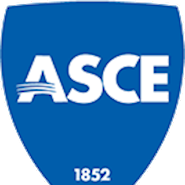Reynold King Watkins, a civil engineering educator and worldwide expert and consultant on buried pipelines, has died. He was 101.
Watkins, Ph.D., P.E., M.ASCE, was presented with ASCE’s Stephen D. Bechtel pipeline engineering award in 1988 and was a life member of the Society. He was a geotechnical engineering expert and a giant of research. Watkins was founder and first director of the Buried Structures Laboratory at Utah State University (USU), for decades considered the most advanced facility for buried pipe research.
He was born in 1920 in Garland, Utah, his father a mining engineer. After his years as a Commander in the U.S. Navy, Watkins became an instructor at Utah State Agriculture College, in Logan, Utah, and in 1947 became associate professor and in 1957, professor. Since 1991 he had been teaching professor emeritus. He also gave short courses on pipes in metropolitan centers in the United States and internationally.
Watkins co-authored Structural Mechanics of Buried Pipes with Loren R. Anderson, along with several other graduate-level textbooks and countless technical papers in journals on the structural performance of buried cylinders. He is best known for his derivation of the Modulus of Soil Reaction, E’, used since the 1950s in the Modified Iowa Equation, to predict deflection in buried flexible pipelines.
This came about when, as a student of the legendary professor Marlin Spangler, Watkins was graciously invited to share his mentor’s office. On one occasion, Spangler said pensively that he had derived a formula to predict deflection of a buried flexible pipe, but it didn’t work. “Would you care to take a look at it?” he asked. Watkins came back some days later having discovered what was wrong with the equation and, after making the corrections, it was published.
In his tenure at USU, Watkins served as an associate director of the Engineering Experiment Station and head of the mechanical engineering department. He was also on state and national engineering committees and a consultant to manufacturers, engineers, and users of buried pipes and tanks. Hundreds of professionals have attended his Piping Systems Institute for practicing engineers, which were conducted annually.
During the 1960s, he chaired the Culvert Committee of the Highway Research Board. In 1997, he received the Industry Pioneer Research Award from the Corrugated Polyethylene Pipe Association. He was subsequently the recipient of the inaugural presentation of the Reynold K. Watkins Award for lifetime achievement in the research and design of buried pipes by the Pipe Rehabilitation Council. In 2006, he received the Distinguished Service Award from the Steel Tank Institute and Steel Plate Fabricators.
Watkins consulted for the Army Engineering Corps in Vicksburg, Mississippi, from 1960 to 1972 and was chairman of Transportation Research Board committees in Washington, D.C., in 1960-1966. He received his Master of Science degree from MIT in 1947, and in 1957 he completed his doctorate from Iowa State University.
He was a member of the American Society of Mechanical Engineers (secretary department heads 1962-1963) and of Cache Valley History Society (president 1986-1988).



